
亚洲中东与伊斯兰研究(英文)(Asian Journal of Middle Eastern and Islamic Studies)(国际刊号) 知网目次维普目次
- AMI入库
- 主管单位:
- 主办单位:
上海外国语大学
- 国际刊号:
2576-5949;EISSN 2576-5957
- 国内刊号:
- 学科分类:
- 字数:
2000-40000
- 有无基金:
/有基金 100.0%
- 周期:
国际号刊-季刊
- 特殊属性:
外文期刊
- 电话:
021-35373277(官网电话)
- 邮箱:
ajmeis@163.com(官网邮箱)
- 复合因子:
0
- 综合因子:
0
- 收录:
知网目次,维普目次
- 级别:
AMI入库
期刊简介
《亚洲中东与伊斯兰研究》期刊已被查看: 次
更新频次
低频栏目:
2023年02期其他-16.7%-期平均发文量7篇
2023年01期其他-16.7%-期平均发文量7篇
2022年04期其他-16.7%-期平均发文量9篇
2022年03期其他-16.7%-期平均发文量8篇
2022年02期其他-16.7%-期平均发文量7篇
2022年01期其他-16.7%-期平均发文量8篇
单位占比
其他-100.0%一作占比
/有基金-100.0%投稿指南
1、该刊只有国际刊号。
2、投稿方式:在线投稿。
3、官网网址:
https://www.tandfonline.com/journals/rmei20
4、投稿系统:
https://rp.tandfonline.com/submission/create?journalCode=rmei
5、主办单位网址:
http://www.shisu.edu.cn/research/journals-and-publications
(上海外国语大学)
http://mideast.shisu.edu.cn/3980/list.htm
(上海外国语大学中东研究所)
6、官网邮箱:ajmeis@163.com
7、官网电话:021-35373277
8、出刊日期:季刊,逢季末月出版。
2024年4月22日星期一
《亚洲中东与伊斯兰研究(英文)》期刊介绍
(Asian Journal of Middle Eastern and Islamic Studies)
《亚洲中东与伊斯兰研究》(Asian Journal of Middle Eastern and Islamic Studies)创刊于2007年12月,英文原名Journal of Middle Eastern and Islamic Studies (in Asia),2017年起改为现名,2018年起改由国际知名的Routledge出版社出版(ISSN 2576-5949 print, ISSN 2576-5957 online)。该刊是上外中东研究所学术期刊国际化及学术“走出去”战略的重要成果,自创刊以来,期刊依托上外中东研究所的教育部人文社科重点研究基地与上海高校智库的双重优势,坚持将区域研究(中东)与领域研究(伊斯兰)相结合,以反映中东与伊斯兰研究前沿成果为立足点,倡导多学科及跨学科研究方法,注重向推介中国及其他亚洲国家学者的最新研究成果,严格执行来稿匿名评审制度,侧重刊发高质量原创性论文,学术质量不断提升,已在国外尤其是东亚、南亚、中东、非洲、欧美等地区拥有相对稳定的作者群与读者群,在国际中东与伊斯兰研究学界的学术影响力逐步提升,2019-2020年度,期刊论文下载量同比增长202%,北美、欧洲和亚洲地区下载占比84.89%,在全球区域和国别研究学术期刊中居第72位,成为扩大中国中东研究学术话语权、展示亚洲中东研究最新成果、紧跟全球中东研究学术前沿的重要学术平台。创刊以来,Anchi Hoh、Yufeng Mao、孙德刚、Tim Niblock、丁俊等曾先后担任主编或共同主编。期刊当前的编辑团队为:共同主编丁俊教授和Tim Niblock教授、副主编钮松研究员和编辑部主任舒梦助理研究员。
《亚洲中东与伊斯兰研究(英文)》作者须知
(Asian Journal of Middle Eastern and Islamic Studies)
【官网信息】
Instructions for authors
About the Journal
Asian Journal of Middle Eastern and Islamic Studies is an international, peer-reviewed journal publishing high-quality, original research. Please see the journal's Aims & Scope for information about its focus and peer-review policy.
Please note that this journal only publishes manuscripts in English.
Asian Journal of Middle Eastern and Islamic Studies accepts the following types of article: original articles, analysis, book reviews.
Open Access
You have the option to publish open access in this journal via our Open Select publishing program. Publishing open access means that your article will be free to access online immediately on publication, increasing the visibility, readership and impact of your research. Articles published Open Select with Taylor & Francis typically receive 32% more citations* and over 6 times as many downloads** compared to those that are not published Open Select.
Your research funder or your institution may require you to publish your article open access. Visit our Author Services website to find out more about open access policies and how you can comply with these.
You will be asked to pay an article publishing charge (APC) to make your article open access and this cost can often be covered by your institution or funder. Use our APC finder to view the APC for this journal.
Please visit our Author Services website or contact openaccess@tandf.co.uk if you would like more information about our Open Select Program.
*Citations received up to Jan 31st 2020 for articles published in 2015-2019 in journals listed in Web of Science®.
**Usage in 2017-2019 for articles published in 2015-2019.
Peer Review and Ethics
Taylor & Francis is committed to peer-review integrity and upholding the highest standards of review. Once your paper has been assessed for suitability by the editor, it will then be double blind peer reviewed by independent, anonymous expert referees. Find out more about what to expect during peer review and read our guidance on publishing ethics.
Preparing Your Paper
Structure
Your paper should be compiled in the following order: title page; abstract; keywords; main text introduction, materials and methods, results, discussion; acknowledgments; declaration of interest statement; references; appendices (as appropriate); table(s) with caption(s) (on individual pages); figures; figure captions (as a list).
Word Limits
Please include a word count for your paper.
A typical paper for this journal should be between 7000 and 9000 words , inclusive of the abstract, tables, references, figure captions, footnotes.
Style Guidelines
Please refer to these quick style guidelines when preparing your paper, rather than any published articles or a sample copy.
Please use British (-ize) spelling style consistently throughout your manuscript.
Please use double quotation marks, except where “a quotation is ‘within’ a quotation”. Please note that long quotations should be indented without quotation marks.
Formatting and Templates
Papers may be submitted in Word format. Figures should be saved separately from the text. To assist you in preparing your paper, we provide formatting template(s).
Word templates are available for this journal. Please save the template to your hard drive, ready for use.
If you are not able to use the template via the links (or if you have any other template queries) please contact us here.
References
Please use this reference guide when preparing your paper.
Taylor & Francis Editing Services
To help you improve your manuscript and prepare it for submission, Taylor & Francis provides a range of editing services. Choose from options such as English Language Editing, which will ensure that your article is free of spelling and grammar errors, Translation, and Artwork Preparation. For more information, including pricing, visit this website.
Checklist: What to Include
Author details. All authors of a manuscript should include their full name and affiliation on the cover page of the manuscript. Where available, please also include ORCiDs and social media handles (Facebook, Twitter or LinkedIn). One author will need to be identified as the corresponding author, with their email address normally displayed in the article PDF (depending on the journal) and the online article. Authors’ affiliations are the affiliations where the research was conducted. If any of the named co-authors moves affiliation during the peer-review process, the new affiliation can be given as a footnote. Please note that no changes to affiliation can be made after your paper is accepted. Read more on authorship.
Should contain an unstructured abstract of no more than 150 words.
You can opt to include a video abstract with your article. Find out how these can help your work reach a wider audience, and what to think about when filming.
Between 3 and 5 keywords. Read making your article more discoverable, including information on choosing a title and search engine optimization.
Funding details. Please supply all details required by your funding and grant-awarding bodies as follows:
For single agency grants
This work was supported by the [Funding Agency] under Grant [number xxxx].
For multiple agency grants
This work was supported by the [Funding Agency #1] under Grant [number xxxx]; [Funding Agency #2] under Grant [number xxxx]; and [Funding Agency #3] under Grant [number xxxx].
Disclosure statement. This is to acknowledge any financial interest or benefit that has arisen from the direct applications of your research. Further guidance on what is a conflict of interest and how to disclose it.
Data availability statement. If there is a data set associated with the paper, please provide information about where the data supporting the results or analyses presented in the paper can be found. Where applicable, this should include the hyperlink, DOI or other persistent identifier associated with the data set(s). Templates are also available to support authors.
Data deposition. If you choose to share or make the data underlying the study open, please deposit your data in a recognized data repository prior to or at the time of submission. You will be asked to provide the DOI, pre-reserved DOI, or other persistent identifier for the data set.
Geolocation information. Submitting a geolocation information section, as a separate paragraph before your acknowledgements, means we can index your paper’s study area accurately in JournalMap’s geographic literature database and make your article more discoverable to others. More information.
Supplemental online material. Supplemental material can be a video, dataset, fileset, sound file or anything which supports (and is pertinent to) your paper. We publish supplemental material online via Figshare. Find out more about supplemental material and how to submit it with your article.
Figures. Figures should be high quality (1200 dpi for line art, 600 dpi for grayscale and 300 dpi for colour, at the correct size). Figures should be supplied in one of our preferred file formats: EPS, PS, JPEG, TIFF, or Microsoft Word (DOC or DOCX) files are acceptable for figures that have been drawn in Word. For information relating to other file types, please consult our Submission of electronic artwork document.
Tables. Tables should present new information rather than duplicating what is in the text. Readers should be able to interpret the table without reference to the text. Please supply editable files.
Equations. If you are submitting your manuscript as a Word document, please ensure that equations are editable. More information about mathematical symbols and equations.
Units. Please use SI units (non-italicized).
……
更多详情:
https://www.tandfonline.com/action/authorSubmission?show=instructions&journalCode=rmei20
上一篇:圣经文学研究(集刊)下一篇:江南大学学报(人文社会科学版)(原:无锡轻工大学学报.社会科学版)(不收版面费审稿费)
《亚洲中东与伊斯兰研究》同类科研管理期刊
-
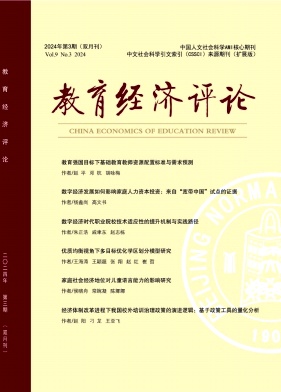
教育经济评论(不收版面费审稿费)
C扩,AMI核心,武A-
CN中文-双月刊影响因子1.488
-
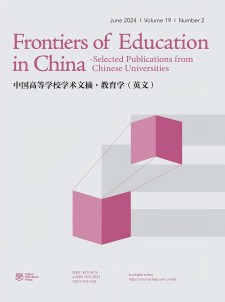
中国高等学校学术文摘·教育学(英文版)(Frontiers of Education in China-Selected Publications from Chinese Universities)
AMI核心
CN外文-季刊影响因子0
-
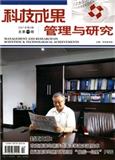
科技成果管理与研究
AMI扩
CN中文-月刊影响因子0
-

华东师范大学教育评论(英文)(或:华东师大教育评论(英文))(ECNU Review of Education)
AMI核心
CN外文-季刊影响因子0
-
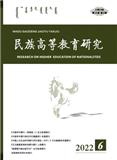
民族高等教育研究 (原:内蒙古民族大学学报)(不收版面费审稿费)
AMI扩,武B+
CN中文-双月刊影响因子0.283
-
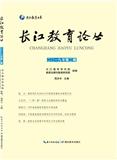
教育治理研究(集刊)(原:长江教育论丛)
AMI核心
集刊-半年刊影响因子0
-
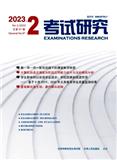
考试研究(不收版面费审稿费)
AMI扩,武B+,CACJ-入库
CN中文-双月刊影响因子0.36
-

计算机教育应用期刊(英文)(Journal of Computers in Education)(国际刊号)
AMI入库
国际号刊-季刊影响因子0
常见问题
-
亚洲中东与伊斯兰研究杂志社官网、联系方式是什么?
亚洲中东与伊斯兰研究杂志社官网:https://www.tandfonline.com/journals/rmei20
投稿网址:https://rp.tandfonline.com/submission/create?journalCode=rmei联系电话:021-35373277(官网电话)
投稿邮箱:ajmeis@163.com(官网邮箱) -
亚洲中东与伊斯兰研究杂志是核心期刊么?
亚洲中东与伊斯兰研究是核心期刊,级别是:AMI入库, 是:科研管理分类下的知网目次,维普目次收录的期刊。
-
请问你们是亚洲中东与伊斯兰研究杂志社吗?
我们不是《亚洲中东与伊斯兰研究》杂志社。本站主要从事期刊信息展示与期刊推荐,不是任何杂志官网,直投稿件请联系杂志社。本站仅提供免费的学术指导、论文辅导、期刊投稿信息整理收集服务。
-
你们指导服务后可以保证文章被发表吗?
期刊发表的成功与否,主要取决于文章内容的质量。编辑老师会根据研究领域、创新性等多因素进行考量。我们会帮助您理解期刊的发表要求,助力提升发表几率,从而增加发表的机会。
-
晋级论文能否在报纸上发表?
在学术界,论文的发表往往被视为研究者职业发展的重要一环。晋级论文,即为了获得更高职称或学术地位而撰写的学术论文,通常需在专业期刊上发表。然而,许多人可能会问
